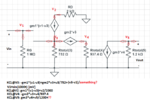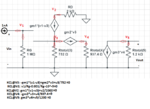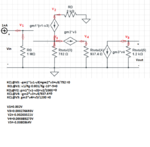The Electrician
Full Member level 5
- Joined
- Jul 13, 2010
- Messages
- 299
- Helped
- 141
- Reputation
- 282
- Reaction score
- 142
- Trophy points
- 1,323
- Location
- Pacific NW
- Activity points
- 4,592
Yes, indeed.
If you set up the equations for a Matlab solution, it will be a trivial matter to change the gm values for the FETs and solve again.
And, tell me what software you use to make your model drawings.
If you set up the equations for a Matlab solution, it will be a trivial matter to change the gm values for the FETs and solve again.
And, tell me what software you use to make your model drawings.



